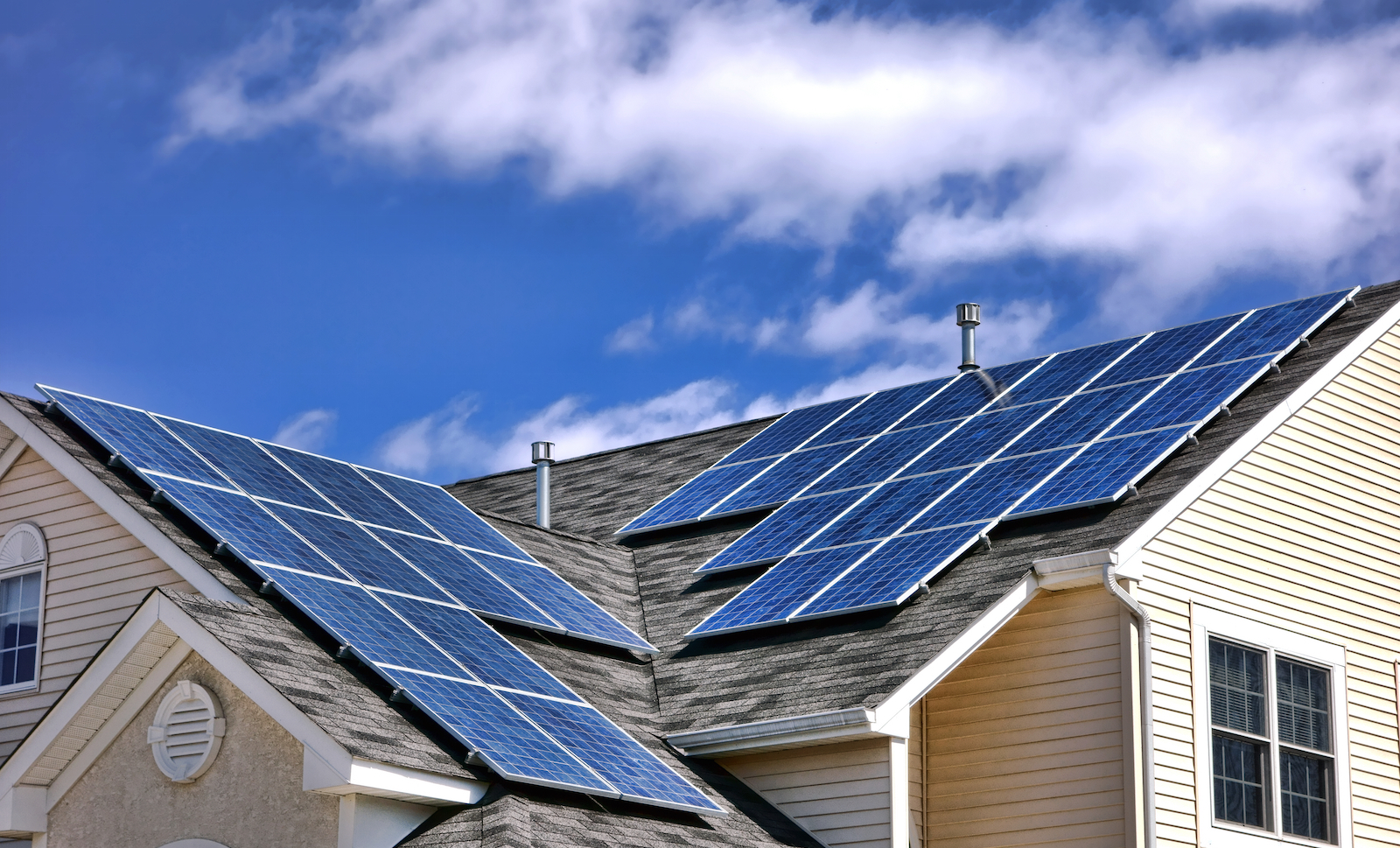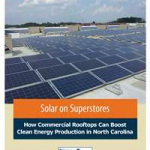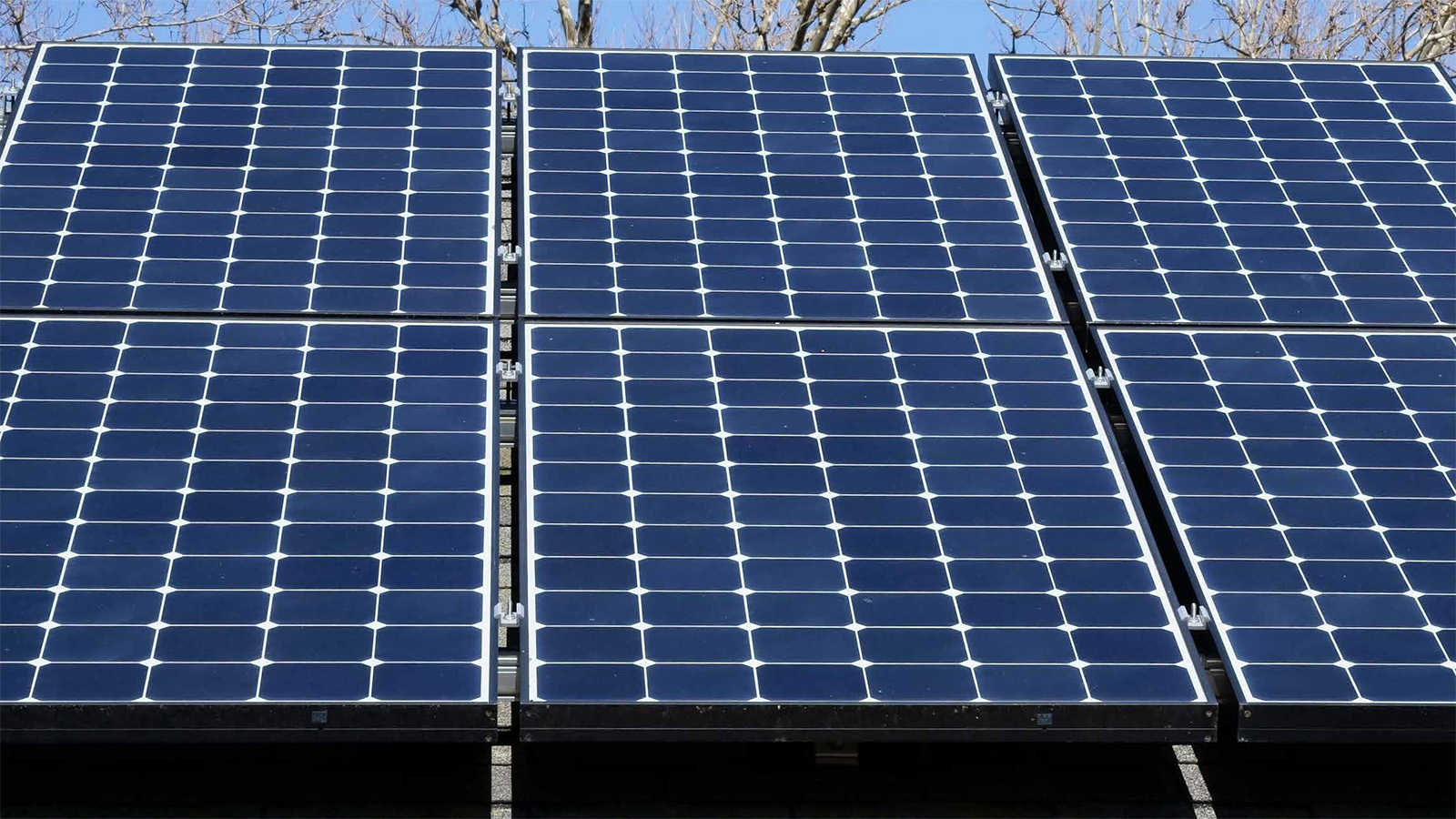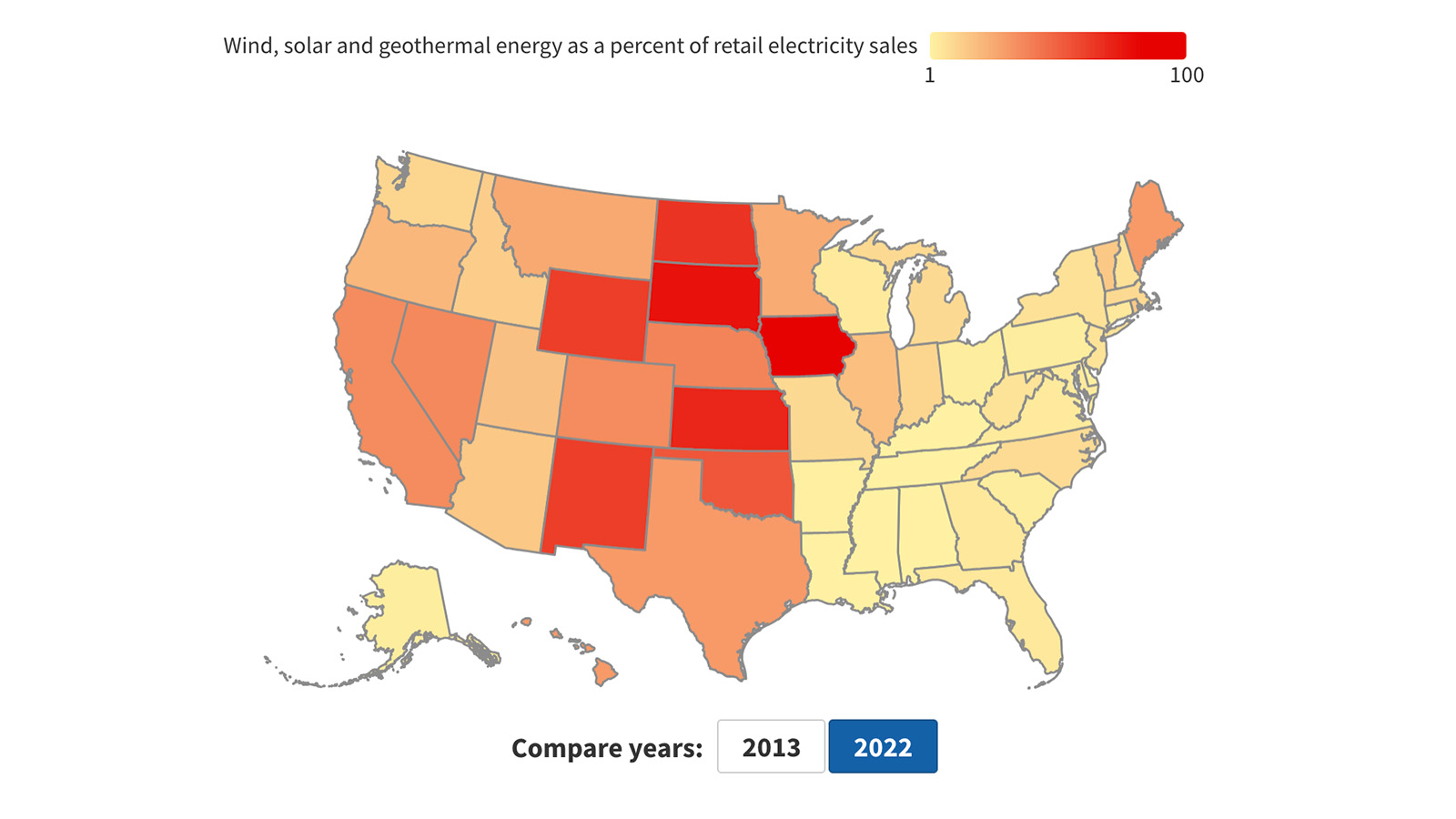
Solar on Superstores
How Commercial Rooftops Can Boost Clean Energy Production in North Carolina
With more than 250 sunny days per year, North Carolina has the potential to replace much of its electricity from dirty fossil fuels with clean solar power. North Carolina has been a national solar leader, ranking fifth in the country for cumulative installed solar energy capacity as of September 2013. However, one of the biggest, largely untapped potential markets for solar power is large commercial buildings, such as “big box” retail stores, supercenters and shopping malls. Tapping into this solar resource to boost North Carolina’s solar capacity can have substantial benefits for the state’s environment, public health and economy.
Downloads
Environment North Carolina Research and Policy Center

With more than 250 sunny days per year, North Carolina has the potential to replace much of its electricity from dirty fossil fuels with clean solar power. North Carolina has been a national solar leader, ranking fifth in the country for cumulative installed solar energy capacity as of September 2013. However, one of the biggest, largely untapped potential markets for solar power is large commercial buildings, such as “big box” retail stores, supercenters and shopping malls. Tapping into this solar resource to boost North Carolina’s solar capacity can have substantial benefits for the state’s environment, public health and economy.
North Carolina has millions of empty rooftops that can support solar panels, and much of the state’s barren land is ideal for large-scale solar energy power plants. With the right policies in place, North Carolina could install solar energy capacity equivalent to 700,000 solar roofs by 2030.[i]
The roofs of large commercial buildings are perfect locations for solar panels – they are flat, largely vacant, and almost always fully exposed to the sun. They also produce energy that can offset the large electricity demand of these buildings while contributing to a cleaner electricity grid.
North Carolina has the potential to install more than 3,000 megawatts (MW) of rooftop solar photovoltaic (PV) capacity on large commercial buildings—enough to offset the annual energy use of these buildings by as much as 60 percent.
- North Carolina has many commercial buildings that are appropriate for solar energy systems: grocery stores, large supermarkets or supercenters, small and large strip malls, enclosed shopping malls and large freestanding “big box” retail stores, such as IKEA or Best Buy. Big box stores, in particular, are ideal because they are generally surrounded by several acres of parking space and therefore very little tree shading.
- North Carolina’s large commercial buildings have approximately 160 million square feet of available and appropriate rooftop space for solar energy systems. That amount of rooftop space could support more than 3,000 MW of solar energy capacity—enough to generate as much electricity as a coal-fired power plant.
Rooftop solar panels can help offset the large electricity demand of big box stores, while contributing to a cleaner and more reliable electricity grid.
- Installation of 3,000 MW of rooftop solar power at big box stores would generate more than 4 million megawatt-hours (MWh) of electricity annually—offsetting the total annual electricity used by these buildings by as much as 60 percent. Replacing this much dirty electricity with solar power would help prevent 3 million metric tons of global warming pollution annually—equivalent to that produced by nearly 600,000 of today’s passenger vehicles.
- By providing additional power when it is most needed—such as on hot summer days when air conditioner use increases—rooftop solar panels can reduce the strain that large commercial buildings place on the electricity grid, increasing reliability and reducing the need for expensive new power plants or transmission lines paid for by all consumers.
- Rooftop solar energy installations also reduce energy waste by producing electricity closer to the customers that will use it. This reduces energy losses during transmission and distribution from far-away power sources, making rooftop solar an important supplement to utility-scale solar production.
North Carolina’s policies have played a major role in making the state a leader when it comes to solar. The following policies will help ensure we continue that leadership, and do even more to develop the state’s rooftop solar market.
- Enable third-party sales of electricity. The state should allow companies that install rooftop solar panels to sell electricity to their customers.
- Fairly compensate large solar energy producers in power purchasing agreements. The rate that utilities pay for solar energy from large-scale producers is very low and does not account for many of the unique benefits of solar power for both the environment and the electricity grid. The state should increase the required rate of compensation to more accurately reflect the true value of solar power.
- Improve the state’s net metering laws. Net metering helps ensure that small commercial or residential customers are fairly compensated for the solar electricity that they produce. Investor-owned utilities should be required to reduce “standby fees” that deter consumers from installing solar panels, and co-op and municipal utilities should be required to offer net metering to their customers.
- Extend incentives for investing in solar technologies in North Carolina. Current renewable energy tax credits for businesses and residents will expire by the end of 2015. In order to build a strong, self-sustaining market for renewable energy in North Carolina, the state should extend these tax credits and then phase them out in a planned and orderly fashion over a number of years.
- Reduce siting, permitting, and interconnection restrictions that can greatly increase the total cost of installing solar energy systems.
- Defend and strengthen the state’s renewable energy standard to require utilities to get 20 percent of their electricity from renewable sources by 2020, and to increase requirements for solar energy production. The state should also require all of the solar power that counts towards North Carolina’s renewable energy standard to be produced within the state.
[i] For the purposes of this report, we assume rooftop solar PV systems to be a mix of residential and commercial systems averaging 10 kW (DC) in size.
Topics
Find Out More


Recording of Rooftop Solar on the Rise webinar

Rooftop solar on the rise

